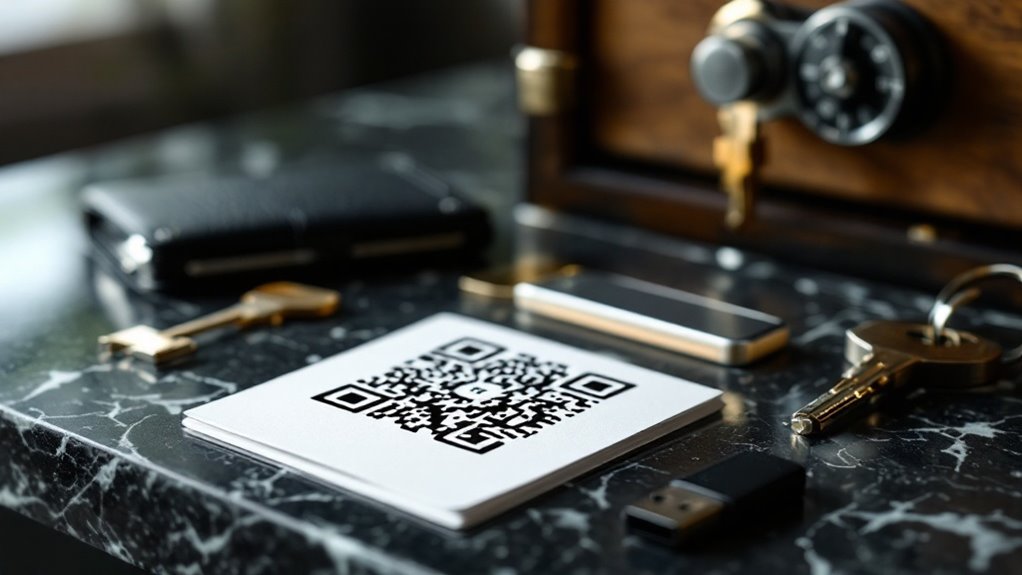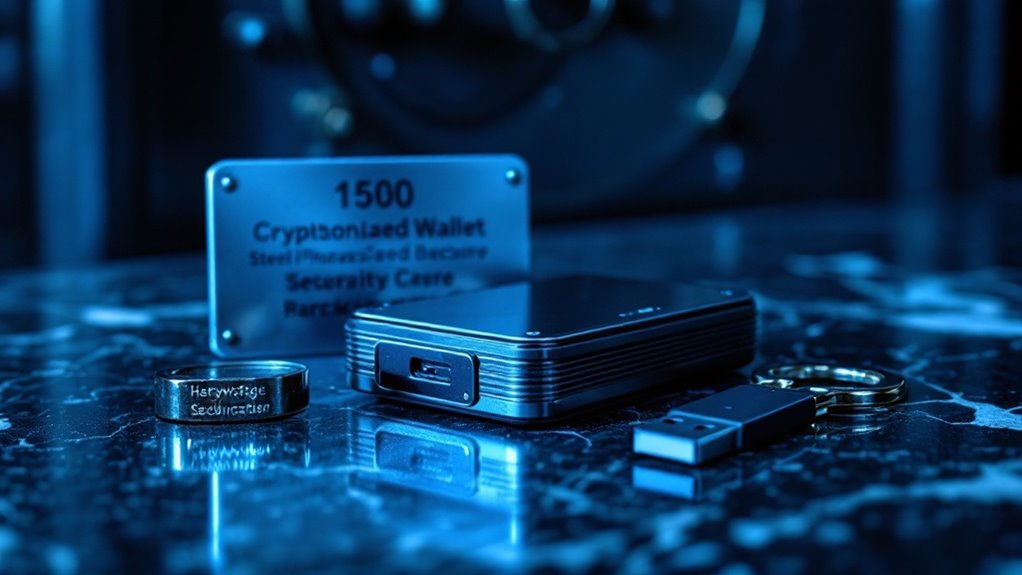Paper wallets serve as physical documents containing the public and private keys needed for cryptocurrency transactions. Like transforming digital magic into tangible reality, these wallets print sensitive information onto paper, creating a completely offline storage solution immune to online threats. While vulnerable to physical damage, they offer a cost-effective alternative to hardware wallets, particularly for long-term holders. Though newer solutions have emerged, paper wallets remind us that sometimes the simplest approaches hold surprising wisdom.

In the ever-evolving landscape of cryptocurrency storage, paper wallets stand as a curious bridge between the digital and physical worlds. These tangible documents transform invisible digital assets into something you can actually hold in your hands – alphanumeric strings and QR codes printed on paper that contain both public and private keys for cryptocurrency transactions.
Paper wallets emerged as a popular storage solution between 2010 and 2016, offering a revitalizing simple approach to securing digital wealth. Like keeping cash under your mattress, but for the crypto age, these wallets provide complete independence from the internet and its associated risks. The process of creating one feels almost like a digital arts and crafts project: generate the keys offline, print them carefully, and triple-check every character before destroying all digital traces. Users must ensure they use trusted open-source generators to create their keys securely. Many users choose to add an extra layer of protection by encrypting with PINs during the creation process.
Paper wallets transform crypto storage into a crafting ritual, merging old-school security with digital innovation for a truly offline safeguard.
The beauty of paper wallets lies in their elegant simplicity. They're immune to malware, safe from online hackers, and wonderfully cost-effective compared to hardware alternatives. For long-term holders who don't need frequent access to their funds, paper wallets offer a satisfying sense of control – there's something reassuring about knowing your digital fortune exists in physical form, tucked away in a fireproof safe. Unlike software wallets, paper wallets don't require regular updates or maintenance to keep your digital assets secure.
However, this old-school approach comes with its own set of challenges. Paper wallets are surprisingly vulnerable to the most mundane threats: coffee spills, hungry pets, or that moment of panic when you can't remember where you stored the "perfectly safe" location. The irony isn't lost on crypto enthusiasts – their ultra-modern digital assets could be destroyed by something as simple as a leaky roof.
While newer storage solutions have largely superseded paper wallets, they remain a fascinating example of how we adapt traditional security concepts to revolutionary technologies. For those who choose this path, success lies in meticulous attention to detail: using high-quality materials, creating backup copies, and treating these documents with the same care as valuable certificates.
In a world increasingly dominated by digital solutions, paper wallets remind us that sometimes the most effective security measures are also the most tactile.
Frequently Asked Questions
How Long Do Paper Wallets Last Before the Ink Starts Fading?
Paper wallet longevity varies markedly. Laser-printed ink can last decades under proper storage, while inkjet prints may fade within months. Environmental factors like light, humidity, and handling frequency impact degradation rates.
Can I Store Multiple Cryptocurrency Types in One Paper Wallet?
While technically possible, storing multiple cryptocurrencies in one paper wallet isn't recommended. It increases security risks and complexity. Best practice is to create separate paper wallets for each cryptocurrency to maintain better security and organization.
What Happens if My Paper Wallet Gets Wet or Damaged?
If a paper wallet becomes wet or damaged, the keys may become unreadable, potentially resulting in permanent loss of funds. Using lamination, waterproof storage, and maintaining backup copies helps prevent catastrophic loss.
Are Paper Wallets Still Considered Secure in Today's Digital Age?
Paper wallets remain secure against online threats but face physical vulnerabilities and generation risks. Modern hardware wallets offer superior security features while maintaining offline protection, making them generally preferred over paper alternatives.
Can I Print Multiple Copies of My Paper Wallet for Backup?
While technically possible to print multiple copies, security experts advise against it. Each copy increases potential theft risk. Instead, consider using alternative backup methods like hardware wallets or Shamir's Secret Sharing scheme.









